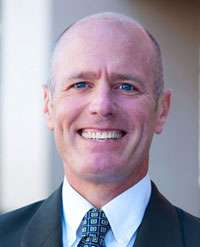Neurology Chair Report - Spring 2017
Spring 2017

The UCLA Department of Neurology is robust and strategically positioned to lead this complex area of medicine into the future. How, though, does one measure an academic department? UCLA Neurology is large and deep, with 135 full-time faculty members and 54 voluntary faculty members. Since the early 1990s, the department’s research activity has been in the top 10 in neurology departmental National Institutes of Health funding. Research output from the department places it in the top five in the field in terms of publication numbers, citations, and specific citation metrics.
On the clinical side, UCLA Neurology provides inpatient services at state-of-the-art Ronald Reagan UCLA Medical Center. The UCLA Neuro Intensive Care Unit is a large 26-bed unit that houses a 3 Tesla magnetic resonance imaging (MRI) unit and combination positron emission tomography-computed tomography scanners. Stroke, general neurology, and epilepsy services occupy spacious floors which, like the hospital in general, have the openness and natural light that was part of the original design by I.M Pei. Together with the neighboring outpatient Neurology Clinic, there is a strong focus on quality medical care, which has earned UCLA Health’s hospitals the ranking of No. 1 in the West and No. 5 in the country by U.S. News & World Report.
UCLA Neurology extends beyond the Westwood campus to include Olive View-UCLA Medical Center and the VA Greater Los Angeles Healthcare System’s West Los Angeles Medical Center and VA Sepulveda Ambulatory Care Center. This network provides exceptional clinical care to one of the most ethnically, economically, and socially diverse patient populations in the country. This network also offers research and educational opportunities for UCLA physicians and scientists. UCLA Neurology education has a matching focus in size and quality. It has recently extended its medical student clerkship. There are more than 125 Neurology trainees as graduate students, postdoctoral fellows, and clinical fellows, a highly ranked residency program, and unique educational channels, such as the UCLA Neurology Resident NINDS R25 research program that funds a dedicated clinical or basic science research track in the residency.
S. Thomas Carmichael, MD, PhD
Chair, Department of Neurology
Frances Stark Chair in Neurology
David Geffen School Of Medicine at UCLA